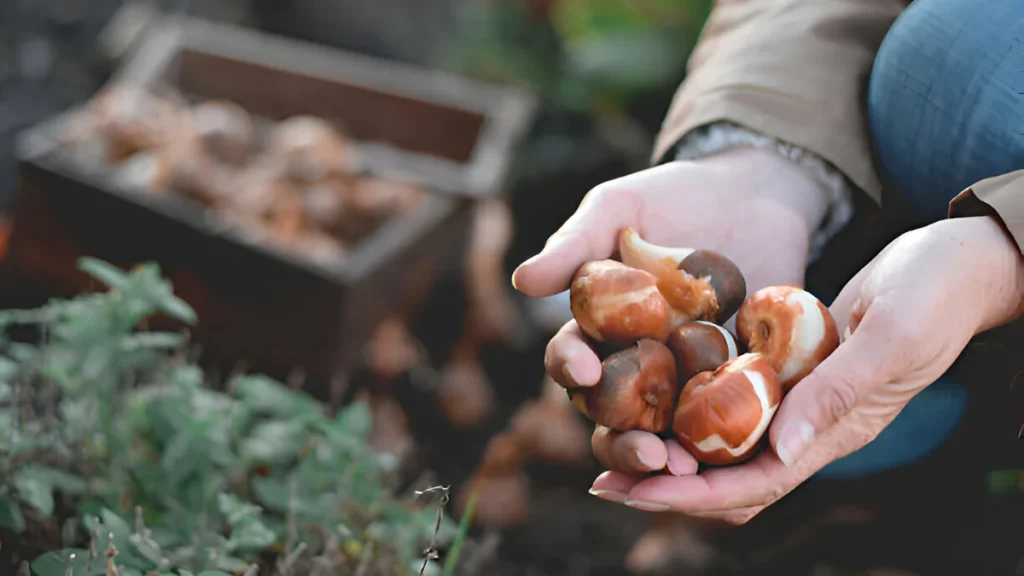Although tulips are a popular spring plant with satin-like petals and vivid hues, they might need to take better to low-maintenance gardening. Maybe not as brilliantly as they did in their first year of bloom. Purchasing new bulbs yearly can help you save money, but the cost can increase if you plant them all throughout your yard. After they bloom, you can remove them from the ground and replant the following fall. Although it could take more work, the outcomes are worthwhile. See the following sources for additional advice on how to store tulip bulbs.
How to store tulip bulbs for next year:
1. Await the appropriate moment to exploit
- After blooming, let the foliage naturally die back. Usually, this procedure takes six weeks. The bulb receives nutrients from the leaves for growth the next year.
- The bulbs are ready to be dug up when the leaves start to wither and turn yellow.
2. Take care to remove the bulbs
- Dig with a spade or garden fork.
- To prevent breaking the bulbs, carefully remove them from the ground. Remove any extra dirt by shaking.
3. Clear the bulb
- Remove any last bits of dirt with a brush. Water cleaning the bulbs should be avoided since moisture can encourage decay.
- Examine the bulbs for any damage, illness, or decay, and dispose of them.

4. Dry out the bulbs
- The bulbs should be placed out of direct sunlight in a dry, well-ventilated environment.
- Give them a few days to a week to dry. This lessens the chance of decay and mold during storage.
5. Get ready for storage
- After the bulbs are dry, remove any leftover leaves and roots.
- To keep mold and rot away from the bulbs, some gardeners coat them with fungicide.
6. Select appropriate storage environments
- The bulbs should be kept in a dry, cool environment that ranges from 35 to 55°F (1 to 13°C). An unheated room, garage, or basement can work well.
- Reduce the humidity to prevent moisture accumulation, which can lead to decay.
7. Pick appropriate storage containers
- Use air-ventilating cardboard boxes, paper bags, or mesh bags.
- For simple identification, mark the containers with the type and variety of bulbs.
8. Keep an eye on the bulbs
- Check the bulbs frequently for indications of rot, mold, or pests. As soon as possible, remove any impacted bulbs to stop the spread.
9. Planting season
- In the fall, usually six to eight weeks before the ground freezes, replant the bulbs.
- Examine the bulbs one more before planting, and throw away any that did not make it through storage.
Conclusion:
You can guarantee that your how to store tulip bulbs stay healthy and prepared to yield lovely flowers the following growing season by following these instructions. Maintaining their vitality and guaranteeing a colorful garden each year depends on proper storage.
Certainly! If you’d like to learn more, please consider following our WhatsApp Channel: Harvest Gardening
A frequently asked questions:
Q1: How to store tulip bulbs over winter?
A1: Over the winter, store tulip bulbs in breathable containers like paper bags or mesh sacks in a cold, dry, and dark spot, such as a garage or basement. Make sure it doesn’t become any warmer than 35–55°F (1–13°C).
Q2: How long can tulip bulbs be stored before planting?
A2: Although they can be kept in storage for up to a year, tulip bulbs thrive best when planted in the fall.
Q3: How to store tulip bulbs after flowering?
A3: Dig up tulip bulbs after they have flowered, allow them to dry in a cool, well-ventilated spot, and then store them in a paper or mesh bag in a cool, dry location until you are ready to plant them again in the fall.



